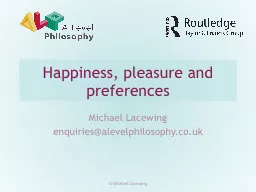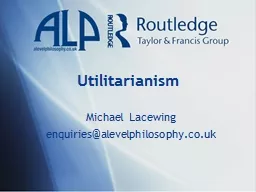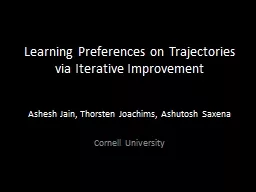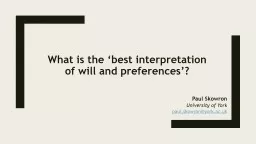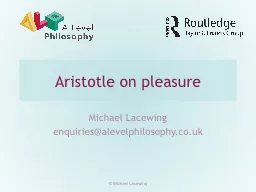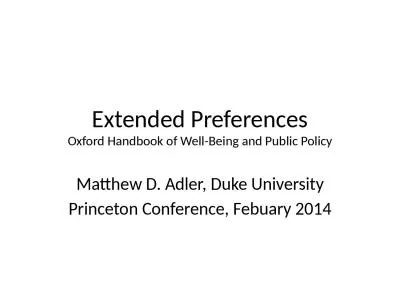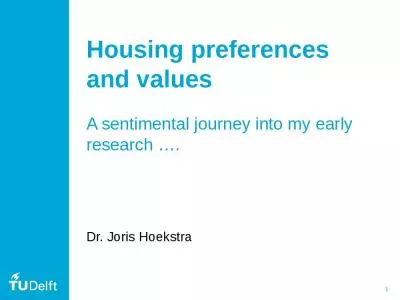PPT-Happiness, pleasure and preferences
Author : jane-oiler | Published Date : 2018-02-20
Michael Lacewing enquiriesalevelphilosophycouk Michael Lacewing Hedonist act utilitarianism An action is are morally right if it maximises happiness But what is
Presentation Embed Code
Download Presentation
Download Presentation The PPT/PDF document "Happiness, pleasure and preferences" is the property of its rightful owner. Permission is granted to download and print the materials on this website for personal, non-commercial use only, and to display it on your personal computer provided you do not modify the materials and that you retain all copyright notices contained in the materials. By downloading content from our website, you accept the terms of this agreement.
Happiness, pleasure and preferences: Transcript
Download Rules Of Document
"Happiness, pleasure and preferences"The content belongs to its owner. You may download and print it for personal use, without modification, and keep all copyright notices. By downloading, you agree to these terms.
Related Documents

